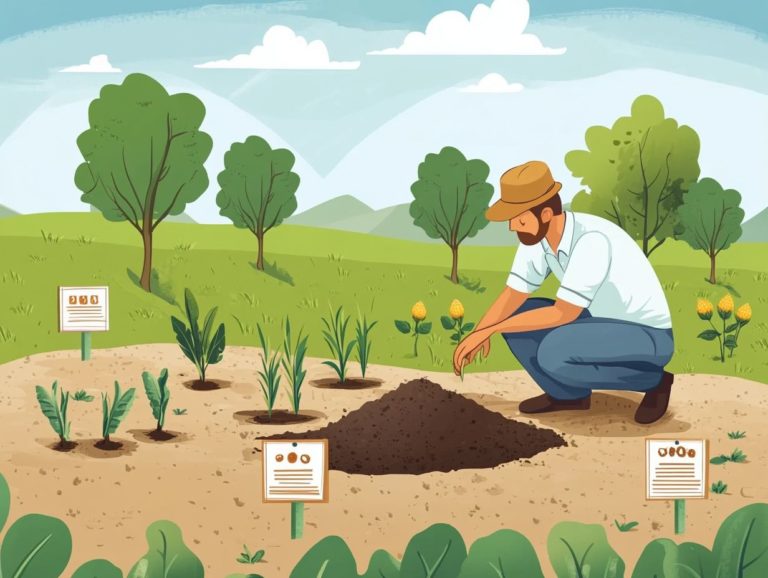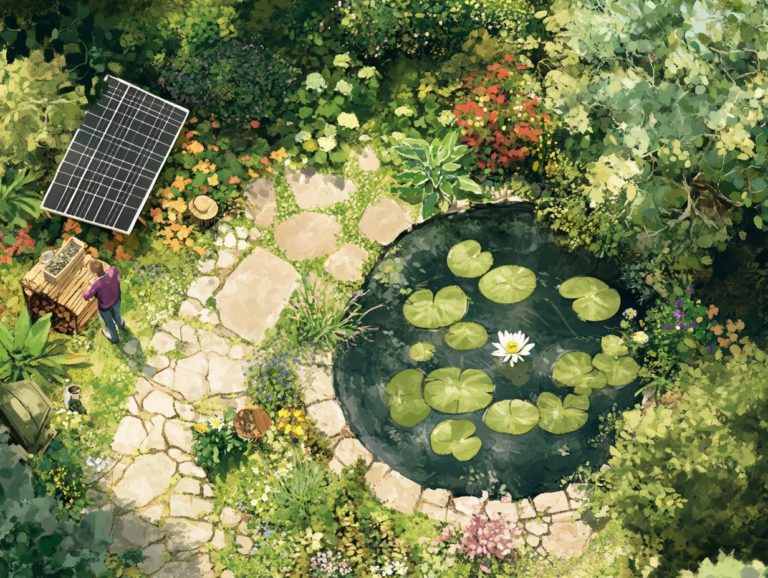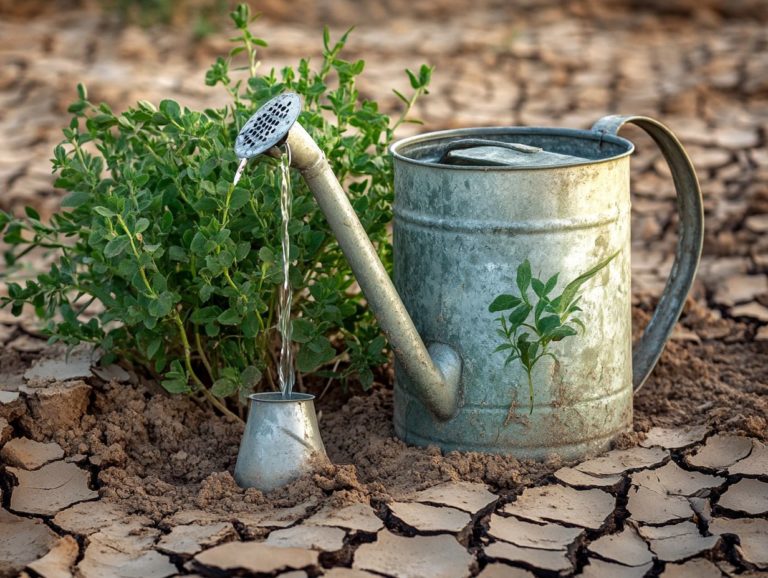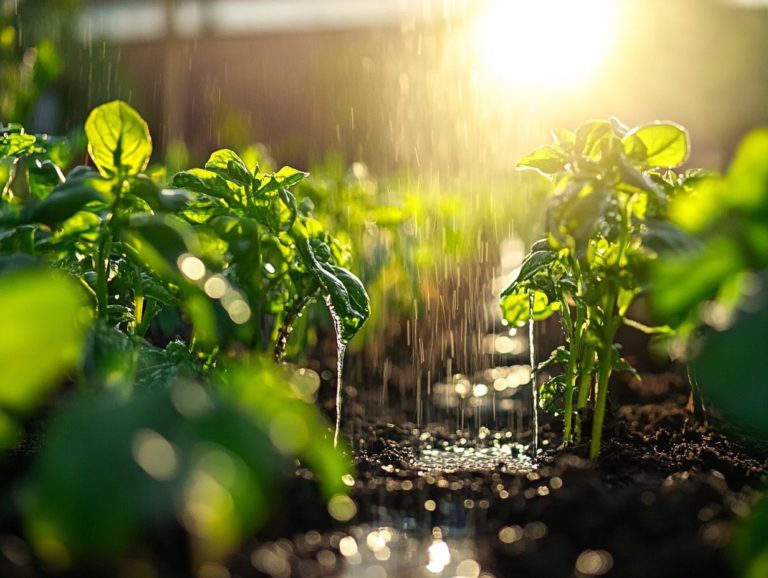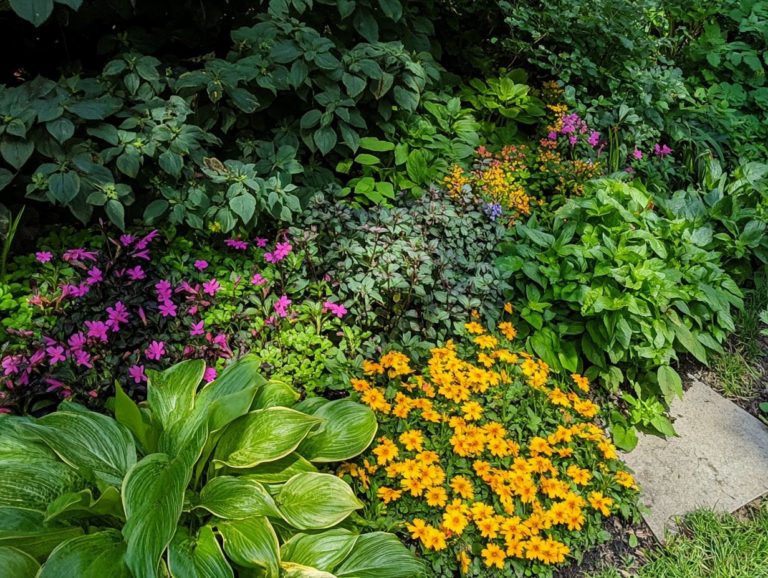How to Create a Budget-Friendly Rainwater System
Are you seeking sustainable solutions to manage your water usage while keeping your finances in check? Harnessing rainwater could be the ideal answer for you.
This article delves into the details of establishing a budget-friendly rainwater collection system. You ll assess your water needs, be guided in selecting the right components, and receive a comprehensive step-by-step installation guide.
You will also discover maintenance tips and cost-saving strategies that render rainwater harvesting not just feasible, but also a savvy financial choice. Start your journey and unlock the potential of rainwater for your home!
Contents
- Key Takeaways:
- Benefits of Using Rainwater
- Assessing Your Water Needs
- Select the Best Tools for Your Rainwater System
- Types of Rainwater Collection Systems
- Essential Components for a Budget-Friendly System
- Installation and Maintenance
- Cost-Saving Measures
- Frequently Asked Questions
- What is a budget-friendly rainwater system?
- Why should I create a budget-friendly rainwater system?
- What are the steps to create a budget-friendly rainwater system?
- Can I use a budget-friendly rainwater system for drinking water?
- How much does it cost to create a budget-friendly rainwater system?
- Are there any incentives for creating a budget-friendly rainwater system?
Key Takeaways:
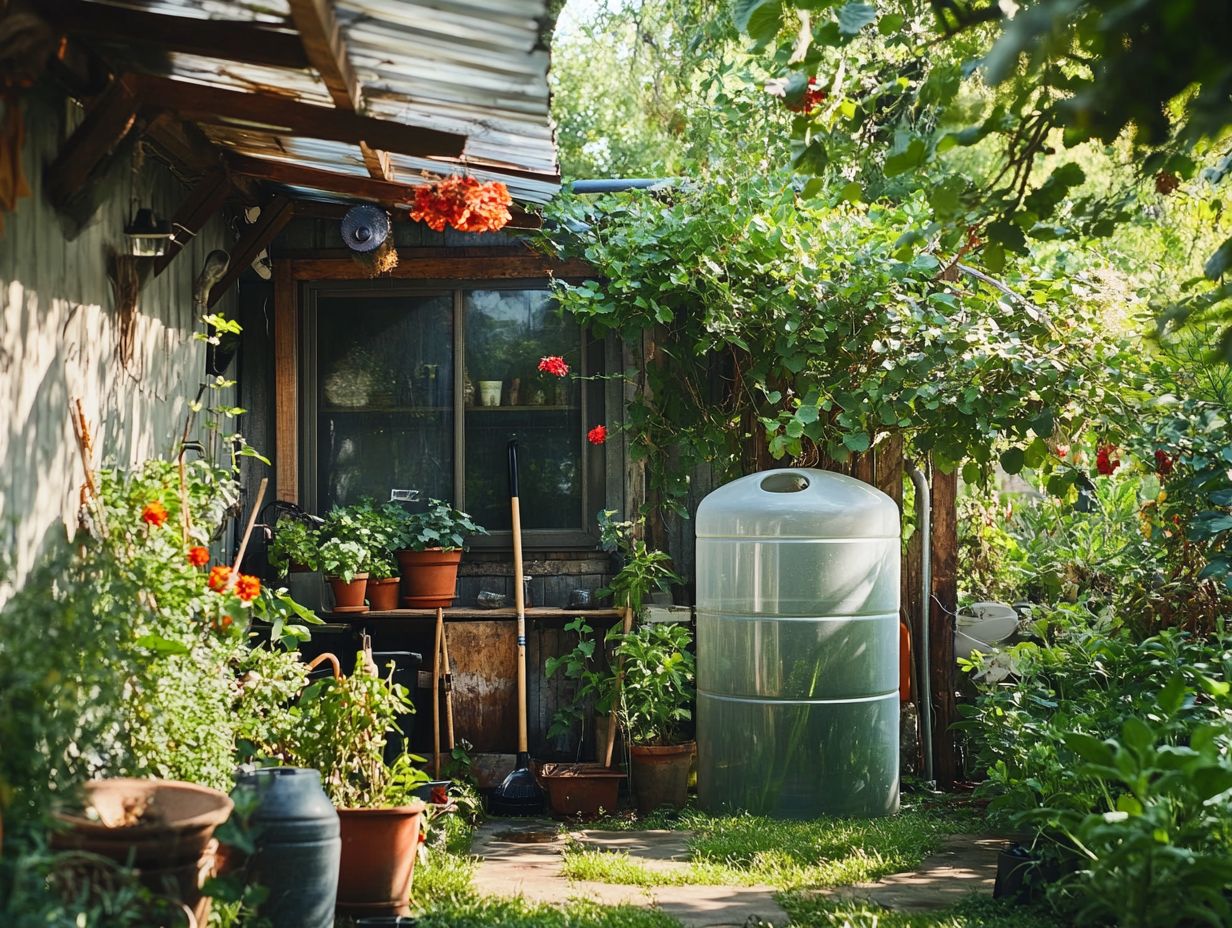
- Use rainwater for multiple purposes such as gardening, cleaning, and even drinking to save money on water bills.
- Calculate your water needs and choose the right components for a budget-friendly rainwater system.
- Proper installation and maintenance can extend the lifespan of your rainwater system, leading to long-term cost savings.
Benefits of Using Rainwater
Utilizing rainwater as a resource offers an array of benefits that can greatly enrich your gardening experience and enhance your water conservation efforts. Rainwater is naturally soft and free from many pollutants often present in municipal water supplies.
By setting up a rainwater collection system, such as rain barrels or IBC totes (Intermediate Bulk Containers), you can significantly reduce your water usage while ensuring a reliable source of moisture for your vegetable garden. Many homeowners have shared positive experiences with these systems, making them highly regarded eco-friendly practices that support a sustainable lifestyle.
Assessing Your Water Needs
Assessing your water needs is essential for designing an effective rainwater collection system tailored to your specific requirements, whether it’s for drinking water or irrigation.
By understanding your household’s water usage patterns be it for landscaping, irrigating your vegetable garden, or tackling maintenance tasks you can accurately determine the appropriate storage capacity for your rain barrel or other collection methods.
This thorough assessment not only aids in managing water rights but also guarantees that you establish a sustainable and efficient water storage solution that aligns with local regulations.
Calculating Water Usage and Storage Requirements
Calculating your water usage and determining the storage requirements for your rainwater collection system are fundamental steps in effective water conservation management. By using tools like a rainfall calculator and a rain gauge, you can accurately estimate the amount of rainwater available for capture and its potential utility in your home or garden.
This calculation will guide you in selecting the appropriate size and type of storage containers, whether they be decorative barrels or IBC totes, ensuring that your water needs are met without unnecessary waste.
Understanding the specific water needs of your household and garden considering factors like seasonal rainfall and the types of plants you have allows for more precise allocations. Employing downspout filters is crucial for keeping captured rainwater clean and free from debris, enhancing its usability for irrigation or other household purposes.
Regularly monitoring the water levels in your storage units not only helps you assess the efficiency of your system but also prepares you for dry spells. Implementing a routine checkup can prevent overflow issues and maintain consistent water quality, ultimately supporting a sustainable and eco-friendly lifestyle.
Select the Best Tools for Your Rainwater System
Choosing the right components for your rainwater collection system is essential for ensuring its functionality and sustainability. Consider various elements like downspout filters, which effectively prevent debris from contaminating your collected water.
Don t overlook the importance of a first flush diverter, as it minimizes rainwater pollutants and significantly enhances the efficiency of your setup. Integrating UV light filters can help maintain the quality of your stored water, making it suitable not only for irrigation but also for potential drinking use.
Types of Rainwater Collection Systems
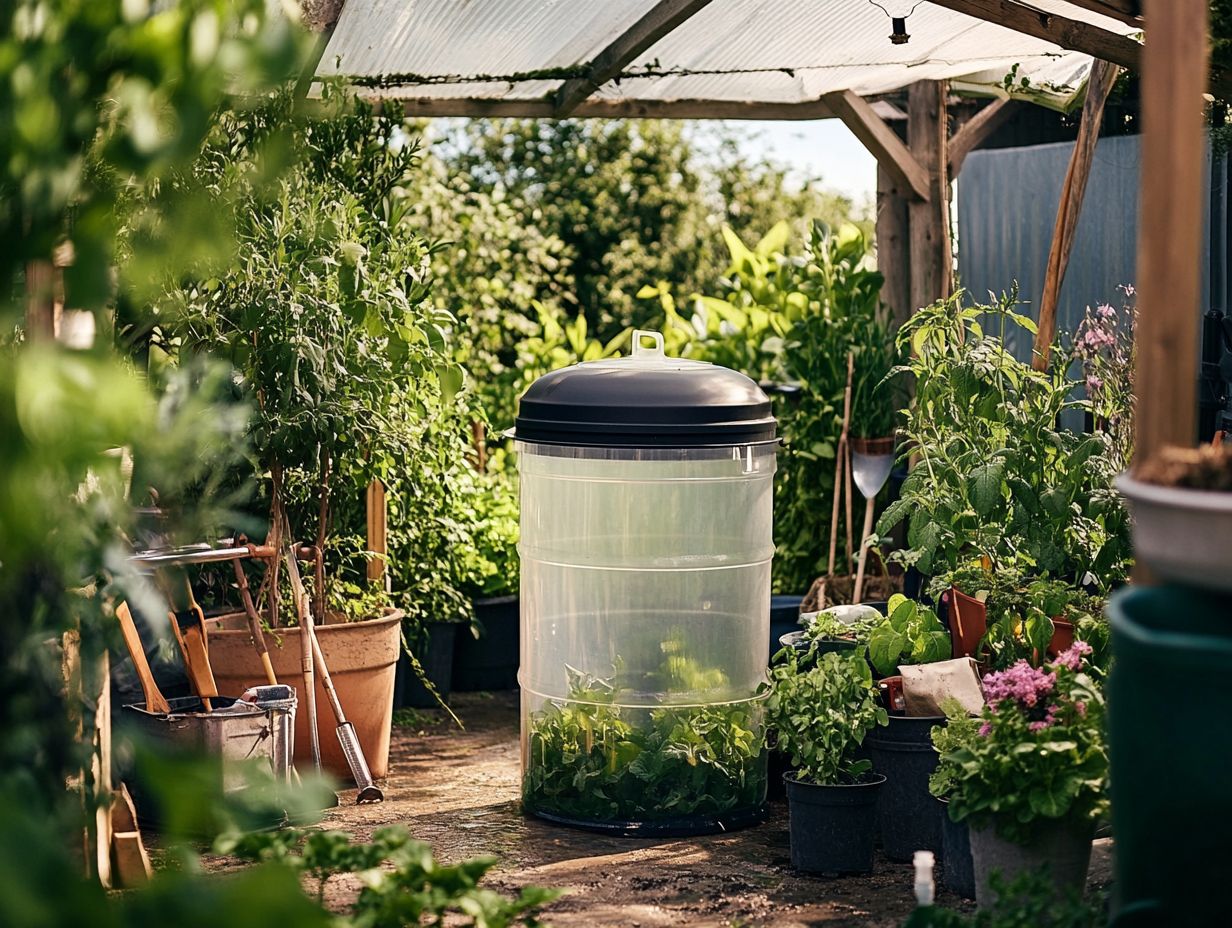
There are several rainwater collection systems available, each offering unique advantages tailored to various applications. For homeowners, rain barrels present an accessible option for gathering water from roofs.
If you need larger storage capacity, intermediate bulk containers are perfect for more extensive setups. Gravity feed systems can effectively distribute the collected rainwater for your gardening and irrigation needs.
Decorative barrels not only serve a functional purpose but also enhance the aesthetic appeal of your landscaping.
For those with more complex requirements, underground cisterns or modular systems can cater to diverse water usage needs, especially in regions like Idaho, where dry spells can be a concern during the summer months.
When selecting your setup, it s crucial to consider the local climate and average rainfall. Some systems perform better under specific weather patterns. For a small garden, a simple rain barrel may suffice, but larger properties might require intermediate bulk containers to meet higher demands.
Routine maintenance tasks, like cleaning gutters and checking for leaks, are essential for ensuring optimal performance. Take a moment to consider your long-term goals for your rainwater system!
Essential Components for a Budget-Friendly System
Building a budget-friendly rainwater collection system doesn t mean sacrificing quality or functionality. You can find essential components that are both affordable and effective.
By utilizing simple plumbing fittings and embracing DIY methods, you can significantly reduce costs while still creating a reliable water storage solution. Community seminars are a treasure trove of insights and tips on affordable materials and techniques, enabling you to successfully implement a cost-effective rainwater harvesting system.
To kick things off, consider using rain barrels made from repurposed food-grade containers; this can dramatically lower your expenses. Opt for gutter systems that require minimal modifications to your existing structures, making the setup process smoother.
If DIY isn’t your cup of tea, local hardware stores often host workshops that focus on affordable solutions and materials. Explore community exchange programs for tools and equipment to lighten your financial load.
Don t forget about routine maintenance tasks. Simple actions can help you avoid larger repair costs down the line, ensuring your water collection system remains efficient and economical for years to come.
Installation and Maintenance
The installation and maintenance of your rainwater collection system are essential to its long-term effectiveness and sustainability.
Regarding installing components like downspout filters, devices that redirect the initial flow of rainwater, and UV light filters, meticulous attention to detail and a solid grasp of plumbing fittings will ensure optimal water quality and performance.
Regular maintenance tasks such as cleaning gutters and inspecting filters are vital to preventing contamination and extending the lifespan of your rainwater system. By prioritizing these steps, you not only enhance functionality but also contribute to a more sustainable future.
Don t wait! Start your rainwater collection journey today for better savings and sustainability!
Step-by-Step Installation Guide
A step-by-step installation guide for your rainwater collection system can transform the process. This ensures that every component works in perfect harmony. Begin with the installation of downspout filters, then move on to connecting plumbing fittings that will direct water into your rain barrel or IBC totes. Don t overlook the importance of adding an overflow valve to effectively manage any excess water. By paying close attention to detail at each step, you ll create a robust system that meets all your water needs.
Careful planning of your installation site is essential. Identify the optimal location for your barrels or totes while ensuring easy access for maintenance; this sets a solid foundation for success. Remember, choosing a location that allows gravity to assist with water flow is key. Ideally, it should be close to gutters and drains.
Once you ve secured your downspout filters, connecting the plumbing fittings guarantees every drop of rainwater is captured efficiently. Don t forget to test all valves and seals to prevent leaks. Keep troubleshooting tips handy for any unexpected hiccups, like clogged filters or high water levels. This foresight will ensure a smooth setup and seamless operation moving forward.
Tips for Proper Maintenance
Proper maintenance of your rainwater collection system is essential for achieving high water quality and best performance for all your outdoor water needs.
Regularly inspect and clean sediment pre-filters. Establish a cleaning schedule to check the system at least every three months, especially during the spring and fall. During these seasons, take a moment to examine gutters and downspouts for any blockages caused by leaves or debris, as these can impede water flow.
Find a way to adjust pH levels, which measure how acidic or basic the water is. Adjusting this can improve water quality. Your seasonal checks should also include inspecting the roof for potential contaminants. Adjust the filtration system as needed. By staying diligent with these tasks, you can maximize efficiency and safety, ensuring a sustainable water source all year round.
Cost-Saving Measures
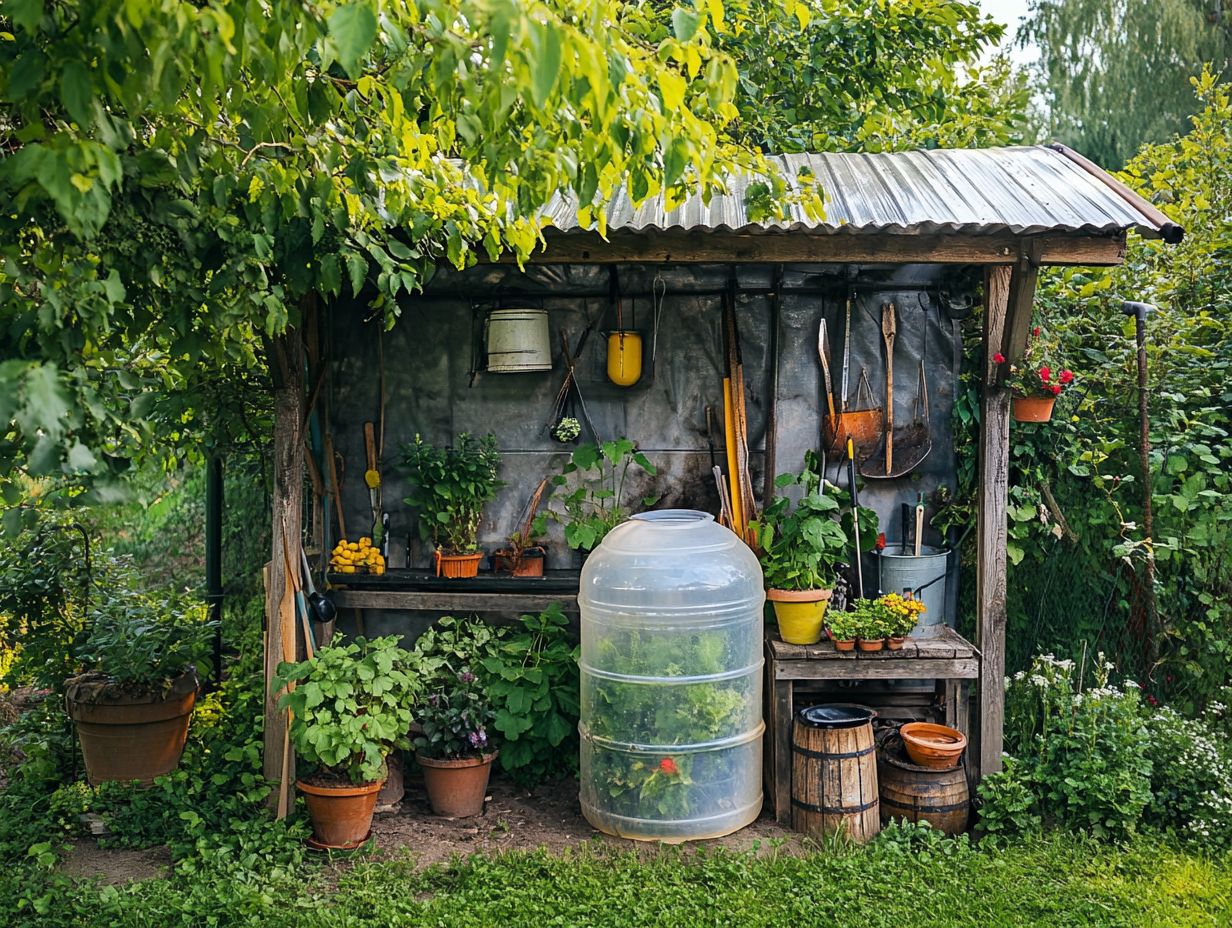
Want to save money while setting up your rainwater system? Implementing cost-saving measures while setting up and maintaining your rainwater collection system can significantly boost its economic benefits. By exploring budget-friendly options for essential components and tapping into community resources for education and support, you can effectively reduce the overall costs linked to water treatment and system upkeep.
Moreover, plan smartly for using collected rainwater in your landscaping. This can lead to substantial long-term savings on your water bills.
Budget-Friendly Options for Rainwater Systems
There are plenty of budget-friendly options at your disposal for creating an effective rainwater system tailored to your household’s needs. By utilizing readily available items like IBC totes for storage, along with affordable rain barrel supplies, you can significantly reduce costs while ensuring you have ample water for gardening and landscaping.
Many community seminars provide valuable insights into low-cost solutions and strategies, enabling you to implement rainwater harvesting without stretching your budget.
These seminars often feature local suppliers showcasing easy-to-install products like diverter kits, which you can conveniently find at hardware stores or online marketplaces. You can also discover inexpensive filtration systems made from simple materials that enhance water quality while safeguarding your storage units.
Attending these events not only deepens your understanding of rainwater systems but also connects you with fellow eco-conscious community members who can share invaluable resources and experiences, making the entire process engaging and communal.
Ways to Reduce Costs in the Long Run
You can significantly reduce costs in the long run for your rainwater collection system through strategic planning and regular maintenance. By embracing DIY methods for repairs and upgrades, you can conduct routine inspections to ensure optimal water quality and prevent larger expenses down the line.
These actions not only save you money but also bolster the sustainability of your rainwater harvesting efforts. Regular evaluations are essential in identifying potential issues before they escalate into expensive repairs.
For example, checking for cracks in storage tanks or inspecting gutters for debris can help maintain your system’s efficiency. Establishing a schedule for these inspections whether seasonally or quarterly ensures that minor problems are addressed promptly.
Enhance your knowledge through online resources or community workshops, enabling yourself to tackle effective DIY fixes. This proactive approach minimizes costs and deepens your connection to sustainable practices.
Frequently Asked Questions
What is a budget-friendly rainwater system?
A budget-friendly rainwater system collects, stores, and uses rainwater for various purposes without breaking the bank. It usually involves simple and affordable materials to create a sustainable water source.
Why should I create a budget-friendly rainwater system?
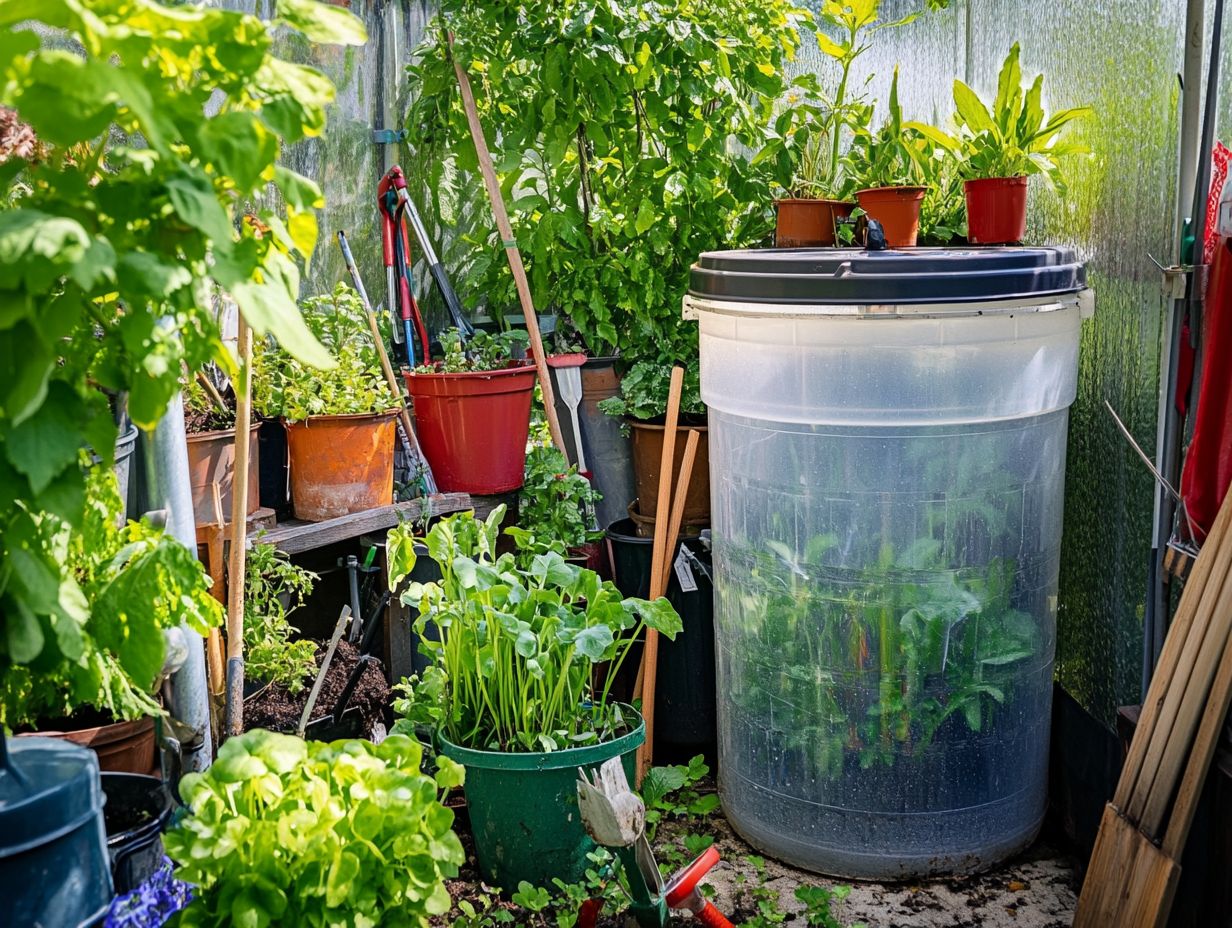
Build a budget-friendly rainwater system to slash your water costs now! You’ll save money, reduce your environmental impact, and have a backup water source in emergencies.
What are the steps to create a budget-friendly rainwater system?
The first step is to assess your water needs and determine the size and location of your system. Next, gather materials like a rain barrel, gutter, and pipes.
Then, install the system by connecting the gutter to the rain barrel and placing the barrel in a suitable location. Finally, use the collected rainwater for your desired purposes.
Can I use a budget-friendly rainwater system for drinking water?
While it’s possible to use a budget-friendly rainwater system for drinking water, properly filter and treat the water before consuming it. It’s recommended to use rainwater for purposes like watering plants or flushing toilets, as it is not safe for drinking.
How much does it cost to create a budget-friendly rainwater system?
The cost can vary depending on the size and materials used. On average, it can cost anywhere from $50 to $500, which is significantly cheaper than installing a complex rainwater harvesting system.
Are there any incentives for creating a budget-friendly rainwater system?
Many cities and states offer incentives, like tax credits or rebates, for installing a rainwater harvesting system, including budget-friendly ones. Check with your local government or water authority to see if there are incentives available in your area.
Learn more about sustainable practices on our website!

